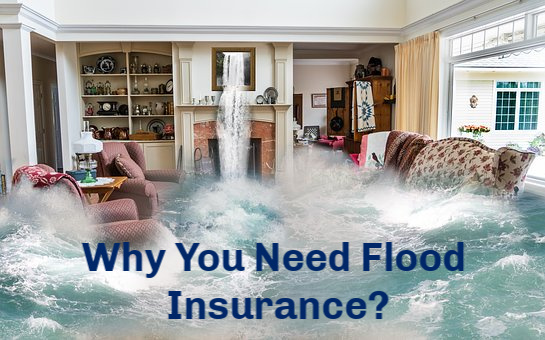Who needs flood insurance? Everyone … according to FEMA. Flooding is the most common and costly natural disaster that occurs in the US. And yes, flooding occurs to homes and businesses both in and out of the “high-risk flood zones”.
Flood coverage is usually not a part of a standard homeowners policy. If you live in a high-risk area, your lender will require flood insurance. But, for those who don’t, you might not have even thought about it. You see the news and see the images of home submerged in water from rivers and creeks overflowing or sudden heavy downpours. Are you prepared?
Most home insurance policies specially exclude flood coverage. They will usually cover a burst pipe or your washing machine supply line breaks, but it won’t cover a flood, sewage backup or gradual leaks.
National Flood Insurance Program
Consider purchasing a policy through the National Flood Insurance
Program (NFIP). This program managed by FEMA but individual policies are sold through independent agents, like Bennie Camp Insurance.
The NFIP policy offers building coverage, like:
- The building and its foundation
- Electrical and plumbing systems
- Central air-conditioning, equipment, furnaces, and water heaters
- Refrigerators, stoves, and dishwashers
- Permanently installed carpeting
- Window blinds
The NFIP offers coverage for your belongings, too. Whether you rent or own, make sure to ask about contents coverage. For most standard policies, contents coverage is not automatically included with the building coverage. Contents coverage usually covers items like:
- Personal belongings such as clothing, furniture, and electronic equipment
- Carpets
- Washers and dryers
- Food freezers and the food in them
- Portable microwave ovens and dishwashers
The NFIP offers some basement coverage. While flood insurance does not cover basement improvements (such as finished walls, floors, or ceilings), or personal belongings kept in a basement (such as furniture and other contents), it does cover structural elements and essential equipment kept in a basement, such as hot water heaters and furnaces.
You can purchase flood insurance at any time
There is usually a 30-day waiting period before the policy goes into effect. Something to consider before storm season begins.
Property owners located in low-to-moderate risk areas may be eligible for the Preferred Risk Policy, which provides flood insurance protection at a lower cost than a standard policy in a high-risk area. The low-cost Preferred Risk Policy is ideal for homes and other properties currently mapped in low-to-moderate risk areas—and it costs homeowners an average of $439 a year.
Bennie Camp Insurance can talk you through your flood coverage options, your current risk, and policy pricing. Call us at 979.764.5955 or email us info@benniecampinsurance.com

